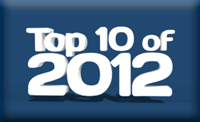Beverage Distributor Leverages Mobile Benefits

By Brian Albright, Field Technologies magazine
Nevada Beverage Co. saves one hour of processing time per day, per location by eliminating paper invoices.
Processing paper invoice forms can bog down a delivery operation, eating up time for delivery drivers and back office staff. Las Vegas-based beverage distributor Nevada Beverage Co. recently reduced its dependence on paper, using mobile computers and printers to streamline the invoicing process, saving hours per day in processing time.
 Nevada Beverage is a major wholesaler of Anheuser- Busch products, as well as nonalcoholic beverages like Monster energy drinks. The company covers a 40,000- square-mile territory and has an annual sales volume of more than 11 million cases.
Nevada Beverage is a major wholesaler of Anheuser- Busch products, as well as nonalcoholic beverages like Monster energy drinks. The company covers a 40,000- square-mile territory and has an annual sales volume of more than 11 million cases.
The company previously used a two-part, preprinted tractor-feed invoice form that cost 7 cents per copy. Once invoices were printed and signed, they had to be brought back to the depot and manually sorted. The paper invoices were time-consuming and costly to manage, and processing them increased reconciliation times for drivers, slowed down documentation, and impacted the accuracy of the customer records.
According to Derick Hufstader, IT director at Nevada Beverage, the company wanted to eliminate the manual forms, as well as provide a way to digitally access the invoice data, instead of sorting through file cabinets full of paperwork in order to send copies to customers or find out who signed the forms. “We really needed to cut down on our paperwork to be more efficient,” Hufstader says.
Mobile Computing, Printing Reduce Paperwork
Nevada Beverage looked to Vermont Information Processing (VIP), an IT consulting firm that had helped the company move from its custom beverage management solution to its current route accounting system, for help in designing and deploying the new mobile application. VIP put together a solution that combined digital printing and mobile computers with the existing beverage application.
Each driver is now outfitted with a complete mobile computing/printing solution. VIP’s mobile delivery software runs on a Motorola MC75 mobile computer, which communicates via Bluetooth to a Datamax- O’Neil PrintPAD integrated printing system. The integrated hardware solution lets drivers easily carry the devices, simultaneously charge the printer and mobile computer, and print without the hassle of physical cables.
According to Hufstader, a key consideration in hardware selection was the dry desert heat and how it might impact durability and battery life. Both the mobile computer and printer had to be rugged enough to function in that environment. Initially, there were some issues with static electricity building up in the printers because of the environment, but VIP provided new plugs to reduce the amount of static electricity generated by the paper during the printing process, and the problem was eliminated.
From proposal to hardware installation, Nevada Beverage was able to complete the full deployment for its 65 drivers in just four months.
Mobility Saves Hours Of Processing Time
Route invoices are loaded into the mobile computers each evening as the routes are assigned. The following morning, the drivers print a summary sheet that lists the products they will need to deliver that day. After verifying the inventory on the truck, the drivers head out on their routes.
At each stop, the driver prints a pick sheet on the mobile printer that lets the customer know what is being delivered. The customer checks price and quantity. If the order is correct, the inventory is unloaded and the order is updated on the mobile computer. Drivers can also make changes to the invoice at the customer location if necessary. The customer signs for the order on the mobile device once the delivery is completed, and the driver prints a copy of the invoice for them.
The devices are not wirelessly connected to the back end servers because the loads don’t change during the shift, Hufstader says. “The route isn’t changing during the day,” he says. “The driver delivers everything he can, and whatever he can’t deliver he just brings back for the next trip.”
The solution has reduced the amount of paper generated in the field and eliminated the need to manually file invoices. “By eliminating all the printing and sorting, we’re more efficient on the administrative side, and we’ve moved that job function over to the operational side of the business, because we can download the information directly from the handheld along with other data,” Hufstader says. The company is saving a minimum of an hour per day at each of its two locations this way.
Under the old system, drivers had to sort, tally, and balance their invoices at the end of a shift. Now, that reconciliation process is almost instantaneous, since the invoices are automatically uploaded into the route accounting solution. The invoices are also more accurate (since they aren’t preprinted) and can be delivered to customers immediately.
The deployment process itself even provided some benefits to the company. “Doing this created a lot of camaraderie among the staff,” Hufstader says. “We all had to interact to make this work and find ways to achieve the things we wanted to achieve.”
The only changes currently planned for the solution are to offer predelivery notifications via email to customers, which will further cut down on the paper generated in the field. “They won’t have to print out that initial order ticket at the customer location,” Hufstader says. “And once you establish that communication path, you can do some e-marketing that way as well.”
Customers have also responded positively to the changes. “Our customers think it’s great,” Hufstader says. “They’re excited to see we’ve moved to a smaller format invoice and that we can change the inventory right on the device and send them a confirmation of the delivery via email.”
